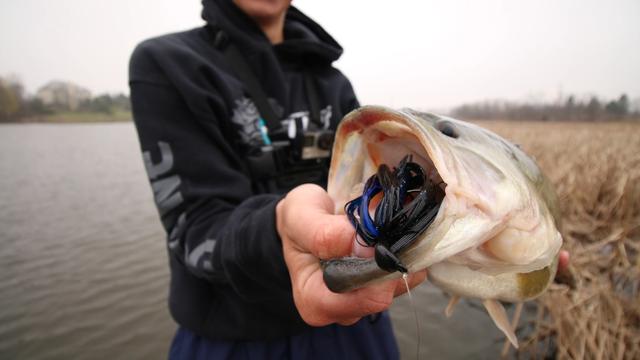
Jig Fishing 101: When To Use 6 Types Of Jigs
The skirted jig has earned its place in the pantheon of jig fishing and bass lures through countless tournament wins and big bass awards. They are flat-out deadly and one of the few baits you can fish from early spring through late fall, in clear water as well as muddy, and in a foot of water just as easily as 40.
As great as they are, it can be easy to get overwhelmed by the numbers when looking for jig fishing ammunition. There are hundreds of brands available with various head shapes, tied in thousands of different colors. Some have rattles, some are silent, and they even have different strengths and configurations of weedguards.
To help you narrow it down – we’ve put together the following analysis of the ideal jig type for each of the major jig presentations. If you’re looking for the ideal jig for your conditions, look no further.
1. Swim Jigs
One of the hottest techniques on the pro tours, swimming a jig is exactly what it sounds like - winding a jig through the water column, just like a spinnerbait or lipless crank. The perfect swim jig ranges from ¼ to ½ ounce, has a lighter weed guard, and has a bullet-shaped head to slither around and through cover. Because swim jigs are moving when the bass bites, they don’t need nearly as heavy a hook – you want something sharp and narrow for maximum penetration. Ideal swim jig trailers include grubs, paddle tails, or other plastics with lots of action.
2. Casting Jigs
Ideal casting jigs should be 3/8 to ½ ounce and feature a round, Arkie style, or flat-bottom head to stand up off the bottom. They should also have a standard or wire weed guard of medium strength. Casting jigs are ideal multi-purpose jigs, and can be fished with or without a rattle. Ideal casting jig trailers include craws, creatures, and grubs.
3. Flipping Jigs
Flipping jigs are designed to go into the heaviest wood or brush and come out unscathed. Flipping jigs should be 3/8 to 1 ounce, and have a stout, heavy gauge hook. The ideal head shape should be something compact, preferably with a recessed line tie. The weed guard on a flipping jig should also be a little firmer than other jig types, as it’s got to prevent the jig from hanging up. Rattles are also a big benefit when flipping a jig, and the best models feature an integrated rattle. The best flipping jig trailers are chunks, craws, and creatures.
4. Grass Jigs
Grass can foul up most any presentation, and certain jigs excel at fishing the green stuff. Grass jigs come in sizes from ¼ ounce up to 1 ½ ounces, and almost always have a conical head with a line tie near the top. This allows them to penetrate the grass better, without collecting grass. Grass jigs are also fished on heavy tackle, so they should also have a stout heavy wire hook. Grass jig trailers should be compact and not feature lots of appendages to snag on the grass.
5. Football Jigs
Meant for dragging along rocky bottoms, a football jigs pigskin-shaped head allows it to roll over rock and rubble without falling into the cracks. The ideal head weight for football jigs ranges from 3/8 to 1 ounce, and they should have a fuller skirt and a sharp wide gap hook. Weed guards are common on football jigs, but many anglers also remove or trim them when fishing looser cover to ensure better hookups. The best trailers for football jigs are skirted grubs, twin tailed grubs, craws, and full-size creature baits.
6. Finesse Jigs
Finesse jigs excel in places with smaller fish, heavy angler pressure, and in cold water. They are commonly 3/16 to ¼ ounce, and come with finesse or spider cut skirts and a finesse light wire hook. They should have ball shaped or compact heads and can be deadly when paired with a small craw or creature bait.
Updated September 21st, 2021 at 4:16 AM CT
